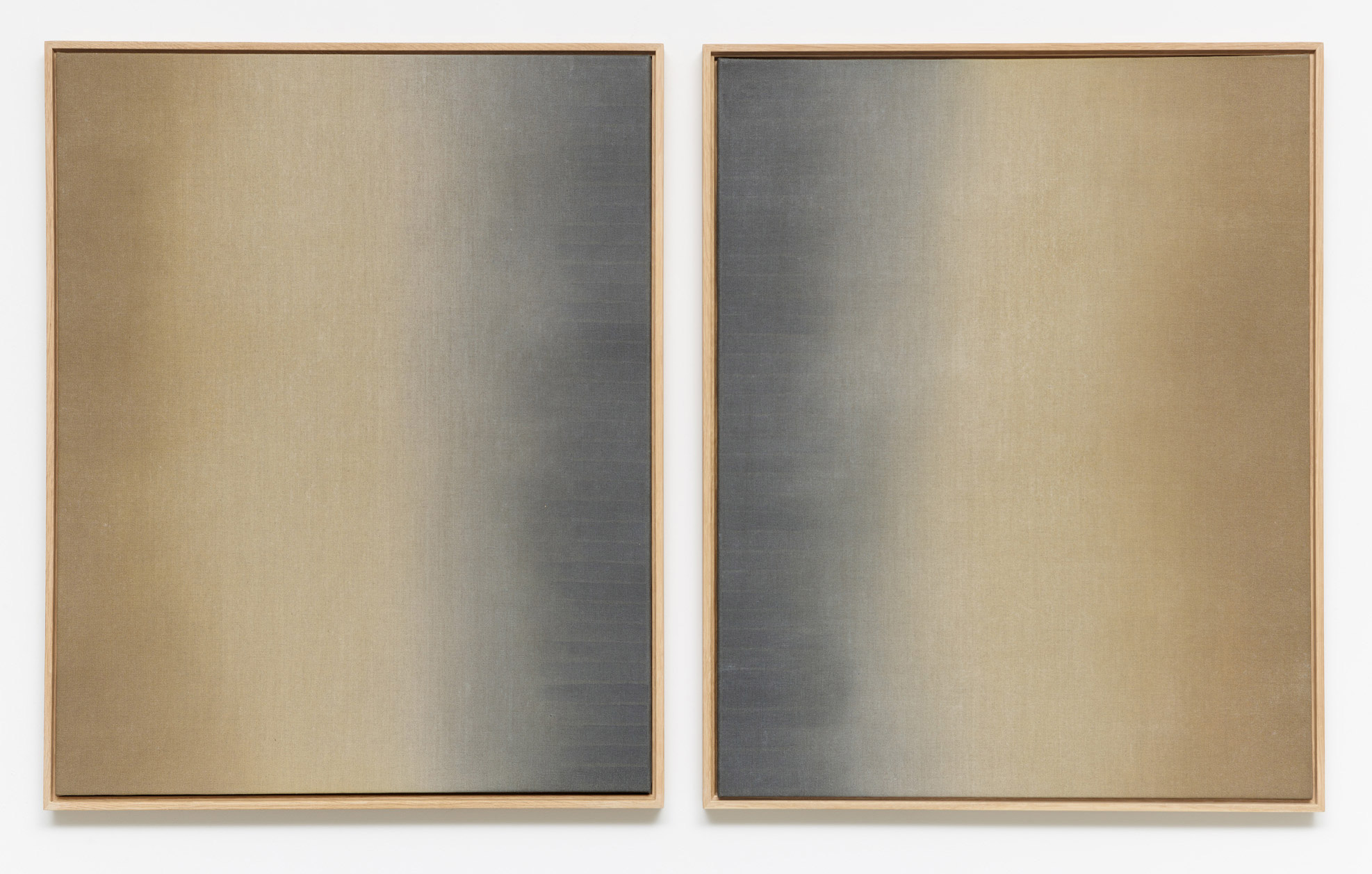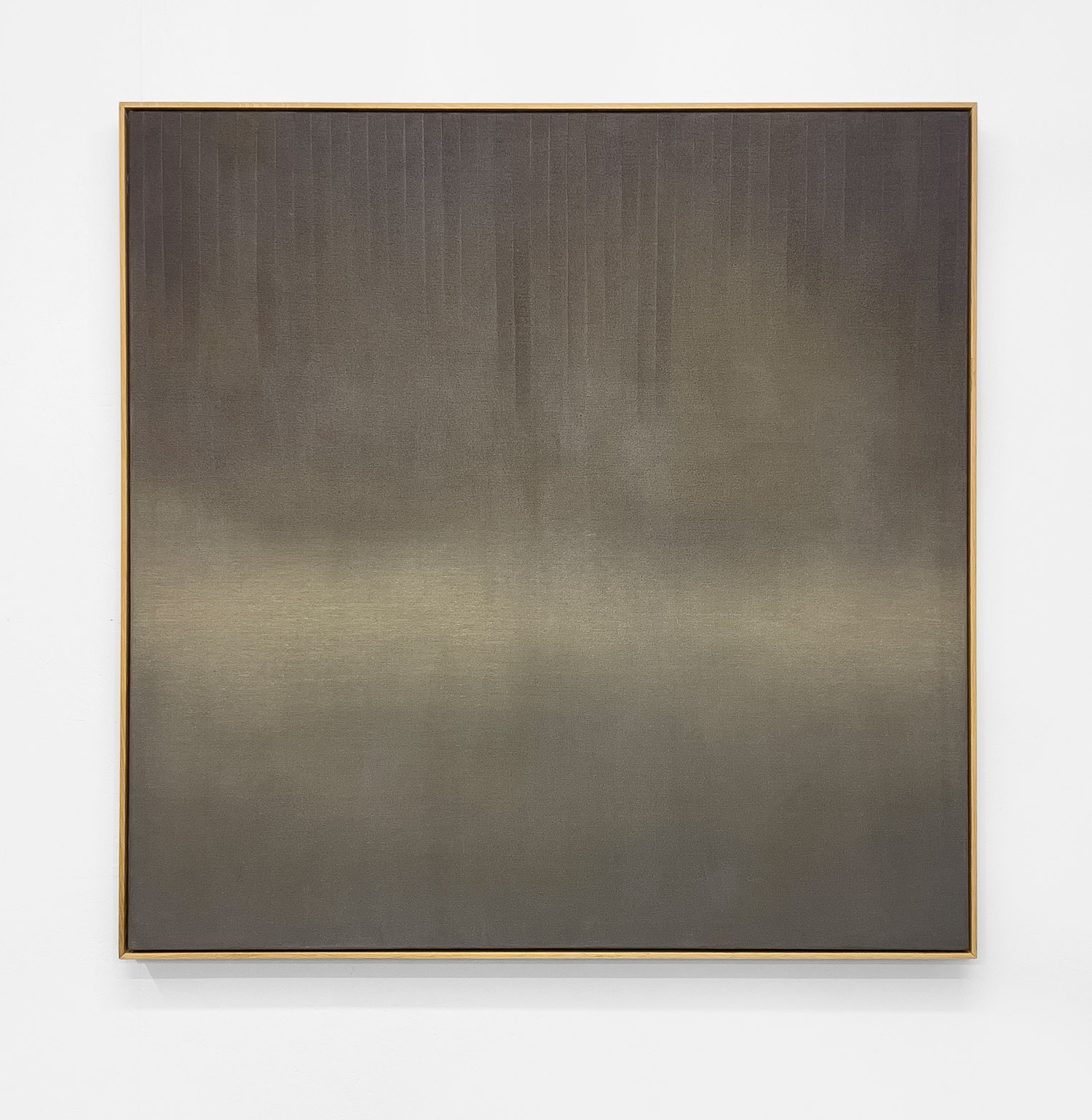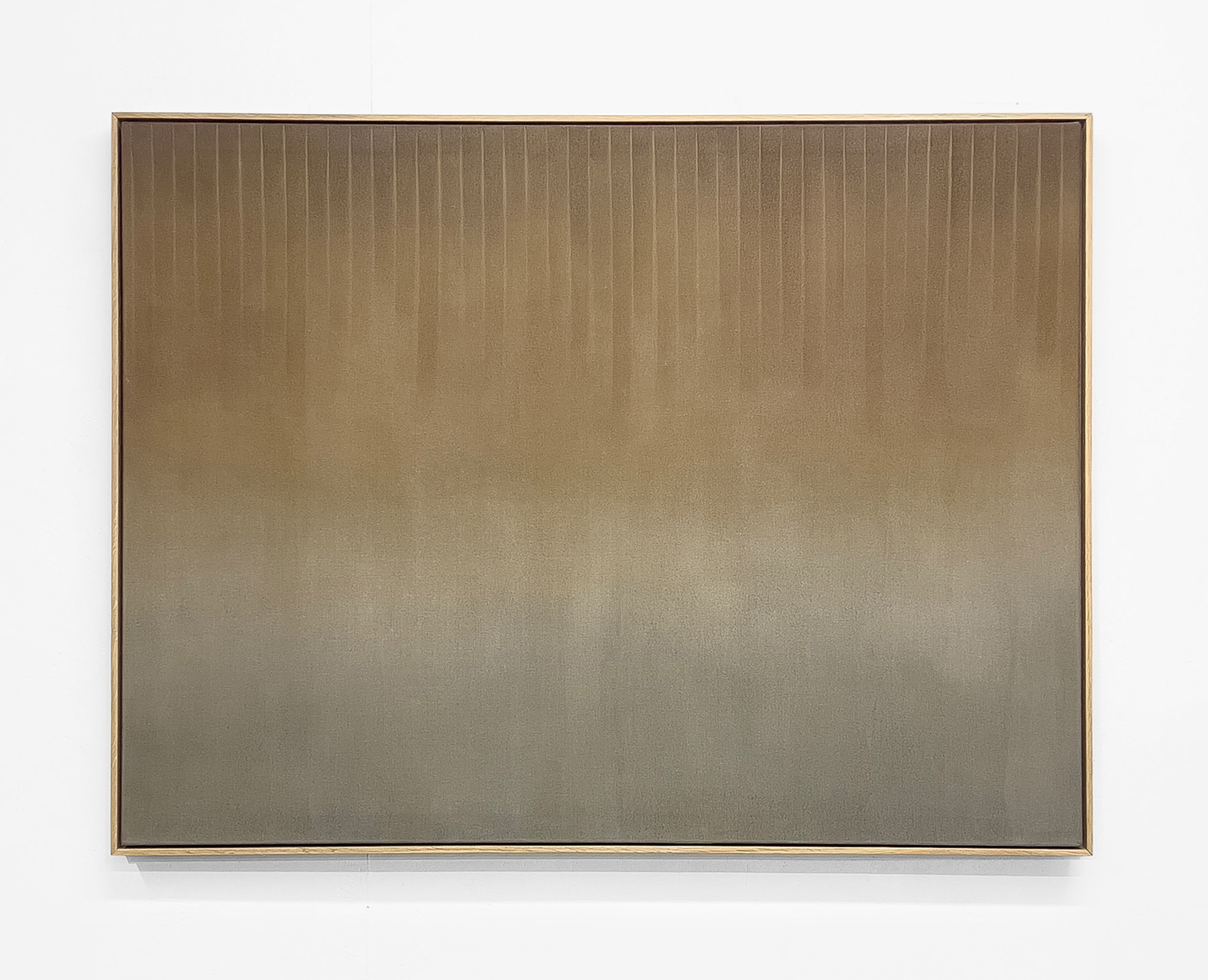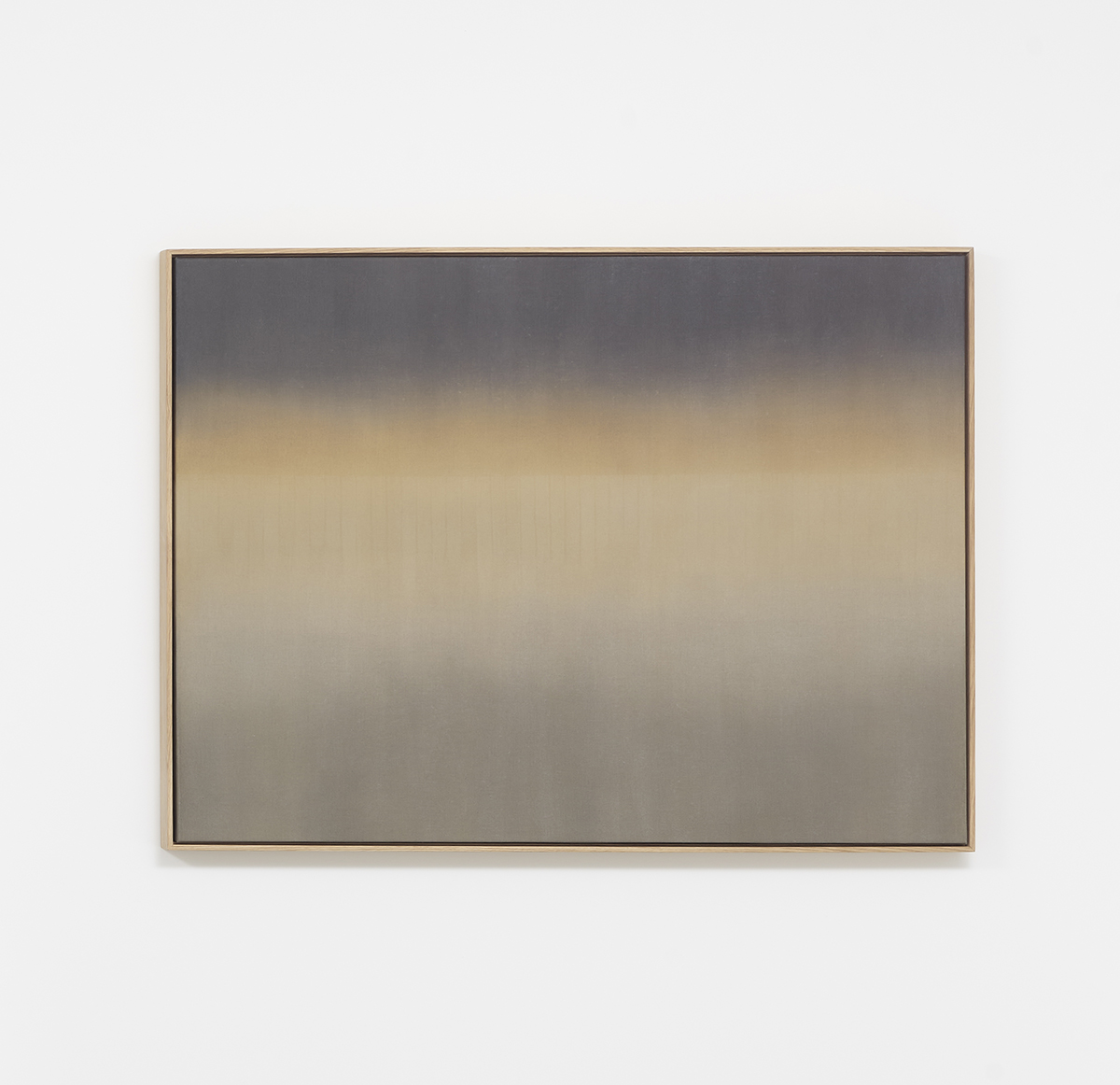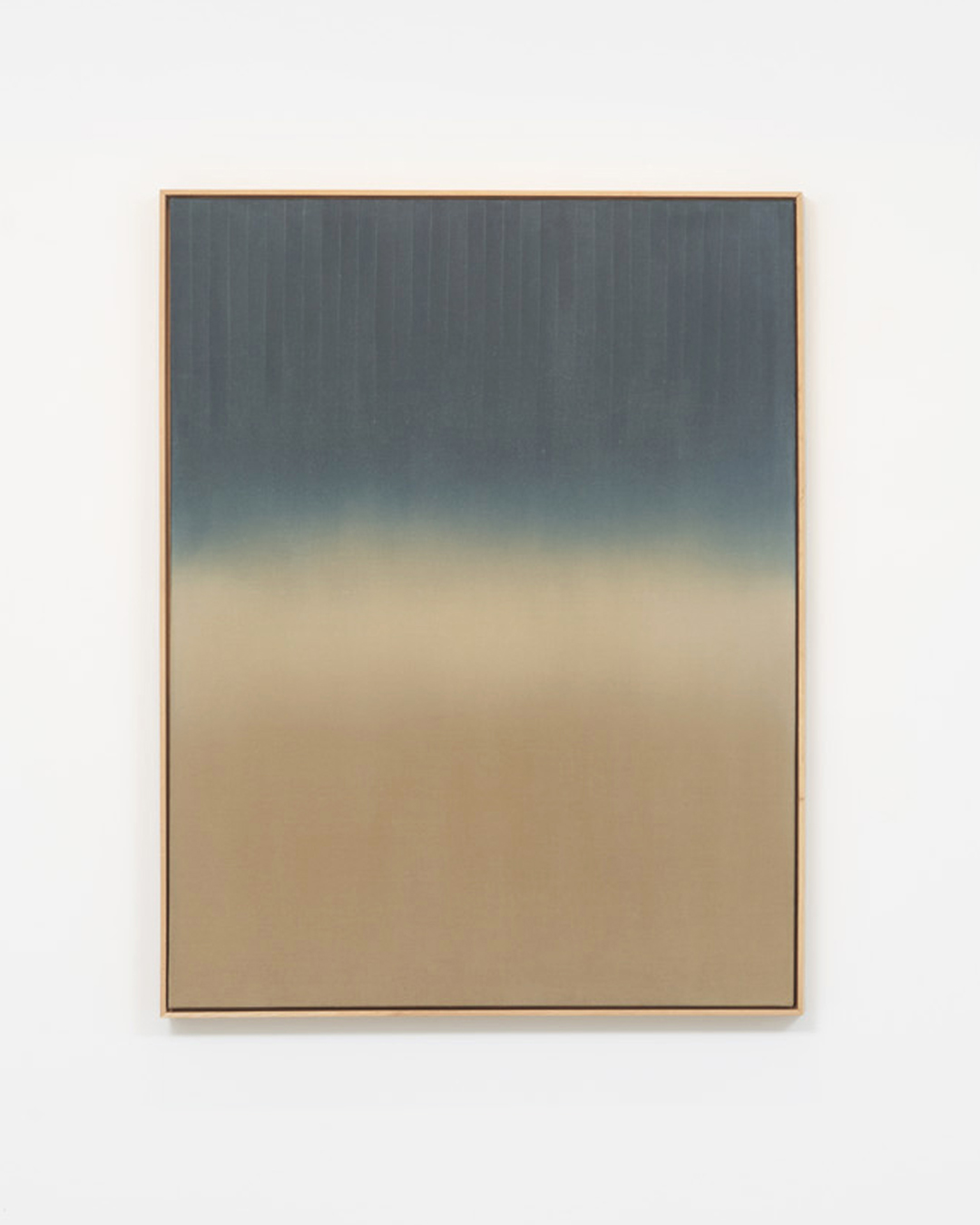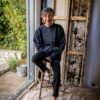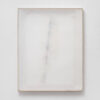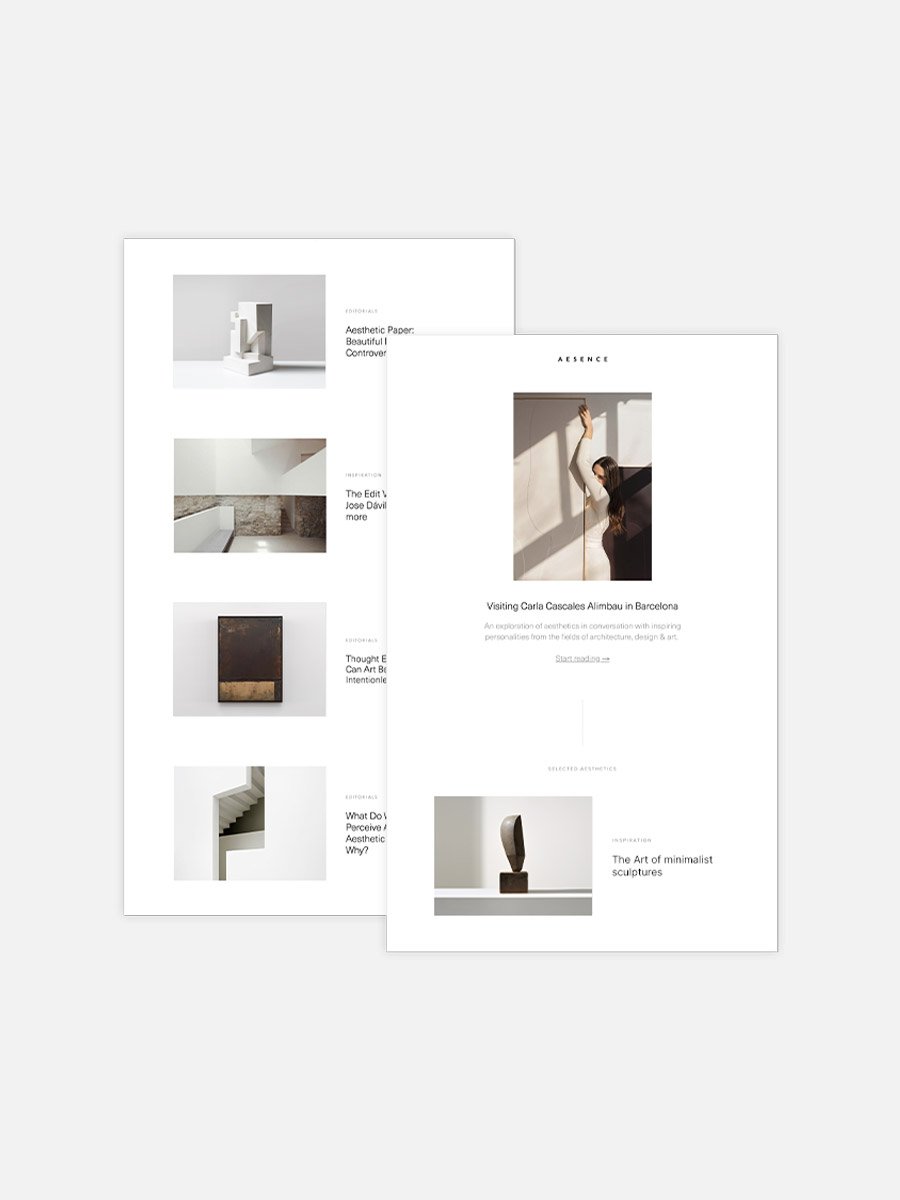“3 Questions for…” showcases and promotes the work of upcoming artists in the early stages of their careers. This time I would like to share with you the meditative works of Isadora Gullov-Singh.
Isadora Gullov-Singh (b. 1973) creates abstract, minimalist paintings that explore the balance between structure and openness, presence and absence. Her works are characterized by gentle color transitions, rhythmic lines, and a reduced color palette. Emerging from memories and emotions, they unfold as restrained, meditative compositions.
Born in Italy and raised across four continents, Gullov-Singh’s Filipino-Danish heritage and multicultural background have deeply shaped her sensibility as an artist. Early experiences of displacement fostered a longing for calm and structure, but also an openness to change. In her creative process, she combines intuition with precision: she slowly builds up layers of acrylic stain on raw linen before adding fine, hand-drawn watercolor lines that follow the rhythm of her breath. A final layer of cold wax seals the surface.
For Isadora Gullov-Singh, painting is a form of meditation and through her work, she creates quiet spaces for contemplation, inviting viewers to slow down and find a sense of serenity. To learn more about her and her art, I had the pleasure of asking her three questions:
Isadora, what inspired you to become an artist, and how has your artistic expression evolved since then?
I grew up in a family with a real love for art and culture. My parents were divorced, so I would shuttle between the two. My Danish father lived in Rome and was a classic Scandinavian maker, trained as an architect and furniture designer. He instilled in me a love of using my hands and my imagination. My Filipino mother lived in Paris and had a love for art and culture and would take me almost weekly to see exhibits at the local museums. I hope my work embodies my blended multiculturalism, and thus speaks a universal language.
I wanted to be an artist from an early age but was encouraged to pursue a “safer” path. At Columbia University, I studied political science with the idea that I would become a lawyer, but I also couldn’t give up art, so I also studied art history/visual arts in parallel. In the end I didn’t become a lawyer, nor did I have the courage to become an artist. I kept creating in a quiet, private practice. When Covid happened, I understood that tomorrow wasn’t promised, and I got the wake-up call to make my dreams of being an artist a reality.
When I was at university, one painting class stood out as the most formative in how I approach my practice. We were required to produce 7 paintings a week, which I thought was extremely fast, but the point of the exercise was to force us to work through different ideas, styles, and mediums without getting too attached, then from there we could learn what worked. To this day, I like to experiment with ideas and materials to figure out what works; I get a physical sensation when something clicks, which signals to me that I’m moving in the right direction. I still try not to get too attached or too precious while I am creating the work so that I can be a more impartial editor. The ability to edit and not overwork a piece is key to a minimalist approach, and time has given me more confidence in my ability to judge when enough is enough.
How would you describe your work to someone who has never seen it, and what do you hope viewers take away from it?
My work is often described as meditative, almost spiritual, and I think that comes from the meditative state that I create from. While my choice of colors is intuitive and restrained, I like to walk the line between fluid and structured. My paintings involve a more physical process of slowly building up layers of acrylic stain on raw linen and then a more cerebral process of working methodically to lay down lines with watercolors.
I’m very process-oriented, so I choose my materials very deliberately because they each impart their own characteristics. I’ve chosen to work with acrylics because of their fast drying properties. As a self-described “recovering perfectionist,” the speed of acrylics forces me to not overthink but also encourages me to embrace the process rather than the outcome. I chose watercolors for the subtle fading lines because I like how the watercolors flow with my breath, like an exhale, and they also have a delicate transparency that I love. When I paint the lines, I feel like I’m doing Tai Chi with a brush in hand.
This might be why I see myself as working with energy and the lines give the energy direction and rhythm. My lines are intentionally painted freehand to retain their imperfections and human touch. Finally, the top layer of cold wax is applied to protect the watercolors but also imbues its own timelessness that is reminiscent of oil painting. I purposefully avoid patterns so that the flow remains random while creating a luminosity that invites expansiveness.
Through my work I process my thoughts around universal themes such as loss, transformation, and hope. With my work, I hope to offer viewers the space to layer in their own thoughts and through it, experience some serenity.
What are you currently working on and what are your plans for the future? Are there any subjects that you would like to explore further?
I’m currently working on a commission for multiple large paintings. Once I have completed them and have a bit of space and time to experiment, I am interested in continuing to push my practice with new materials and scale. Having recently completed a large-scale public art commission made of wood that stands 6m tall and 4.5m wide, I am particularly excited about exploring ways in which my work can exist in a space and have a dimensional presence that still speaks in a quiet, minimalist language. Finding a way to cross the divide between what I envision and what I can create is the kind of challenge I find exciting. I love learning and solving puzzles.
Another area I am interested in exploring is the emerging field of neuroaesthetic. I would like to get a better understanding of the perception of beauty, and how learnings from that field can be applied to create art that can improve well-being.
With my work, I hope to offer viewers the space to layer in their own thoughts and through it, experience some serenity.
